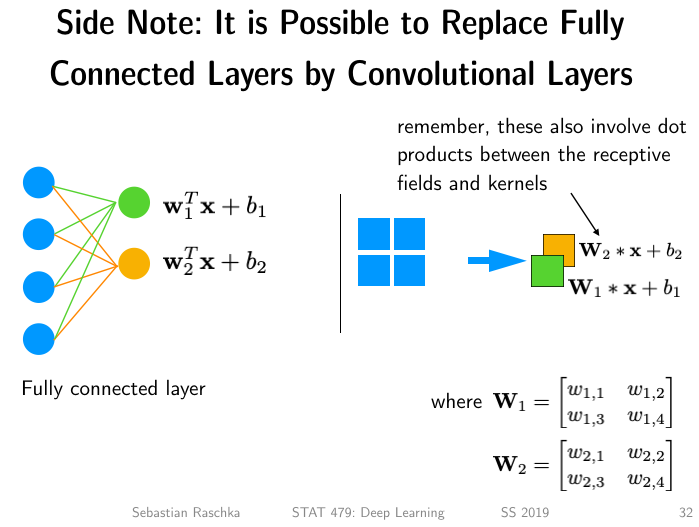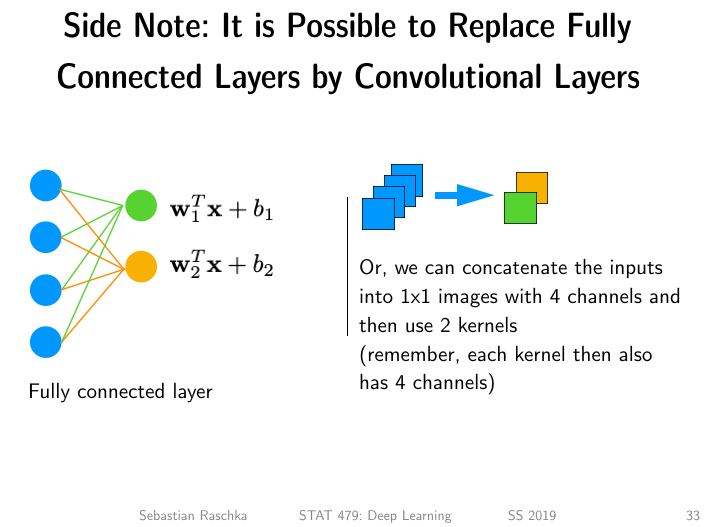Machine Learning FAQ
Can Fully Connected Layers be Replaced by Convolutional Layers?
Yes, you can replace a fully connected layer in a convolutional neural network by convoplutional layers and can even get the exact same behavior or outputs. There are two ways to do this: 1) choosing a convolutional kernel that has the same size as the input feature map or 2) using 1x1 convolutions with multiple channels.
To illustrate and demonstrate this, assume we have a 2x2 input image:
import torch
inputs = torch.tensor([[[[1., 2.],
[3., 4.]]]])
inputs.shape
torch.Size([1, 1, 2, 2])
Fully Connected Layers
A fully connected layer, which maps the 4 input features two 2 outputs, would be computed as follows:
fc = torch.nn.Linear(4, 2)
weights = torch.tensor([[1.1, 1.2, 1.3, 1.4],
[1.5, 1.6, 1.7, 1.8]])
bias = torch.tensor([1.9, 2.0])
fc.weight.data = weights
fc.bias.data = bias
torch.relu(fc(inputs.view(-1, 4)))
tensor([[14.9000, 19.0000]], grad_fn=<ReluBackward0>)
Method 1: Convolutions with kernels equal to the input size

We can obtain the same outputs if we use convolutional layers where the kernel size is the same size as the input feature array:
conv = torch.nn.Conv2d(in_channels=1,
out_channels=2,
kernel_size=inputs.squeeze(dim=(0)).squeeze(dim=(0)).size())
print(conv.weight.size())
print(conv.bias.size())
torch.Size([2, 1, 2, 2])
torch.Size([2])
conv.weight.data = weights.view(2, 1, 2, 2)
conv.bias.data = bias
torch.relu(conv(inputs))
tensor([[[[14.9000]],
[[19.0000]]]], grad_fn=<ReluBackward0>)
Methods 2: Convolution with 1x1 kernels

Similarly, we can replace the fully connected layer using a convolutional layer when we reshape the input image into a num_inputs x 1 x 1 image:
conv = torch.nn.Conv2d(in_channels=4,
out_channels=2,
kernel_size=(1, 1))
conv.weight.data = weights.view(2, 4, 1, 1)
conv.bias.data = bias
torch.relu(conv(inputs.view(1, 4, 1, 1)))
tensor([[[[14.9000]],
[[19.0000]]]], grad_fn=<ReluBackward0>)
If you like this content and you are looking for similar, more polished Q & A’s, check out my new book Machine Learning Q and AI.